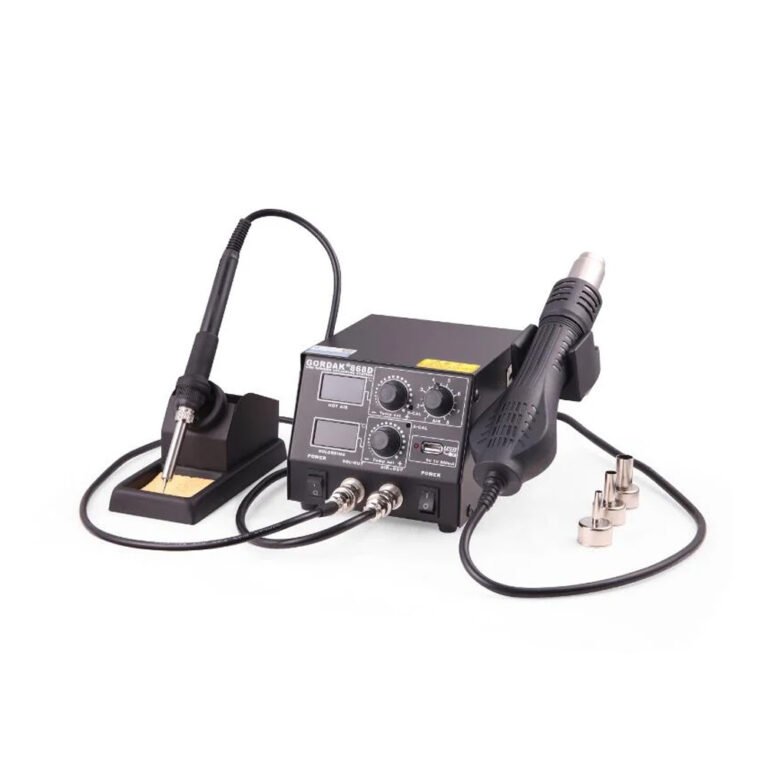A soldering station is an essential tool for anyone working with electronics, from hobbyists to professional technicians. Unlike a basic soldering iron, a station offers precise temperature control, stability, and interchangeable tips, making it ideal for delicate components and PCBs. This guide explains how to properly use a soldering station to ensure safe, effective, and high-quality soldering.
Step 1: Set Up Your Soldering Station
- Place the station on a stable, heat-resistant surface.
- Connect the soldering iron to the station and ensure the cord is safely routed.
- Prepare a soldering stand and sponge or brass wool for tip cleaning.
Step 2: Adjust the Temperature
- Set the station to the appropriate temperature:
- 320°C–350°C for leaded solder
- 350°C–370°C for lead-free solder
- Let the station preheat for a few minutes to reach the target temperature.
Step 3: Select and Prepare the Tip
- Choose a tip shape suitable for your task (conical, chisel, knife, or needle).
- Tin the tip by applying a small amount of solder to coat it evenly—this improves heat transfer and prevents oxidation.
Step 4: Prepare the Workpiece
- Ensure PCB pads and component leads are clean and free of oxidation.
- Position the component securely, using a PCB holder or third hand if needed.
Step 5: Solder the Joint
- Touch the tip to both the pad and lead for a couple of seconds.
- Feed solder wire to the joint, allowing it to flow naturally.
- Remove solder first, then the iron.
- The joint should be shiny and smooth, not dull or lumpy.
Step 6: Clean the Tip
- Wipe the tip on a damp sponge or brass wool to remove excess solder.
- Always re-tin the tip before storing the iron to prevent oxidation.
Step 7: Power Down and Store Safely
- Turn off the station when finished.
- Allow the iron to cool in its stand—never immerse in water.
- Store the station and tips in a safe, dry location.
Safety Tips
- Always use a fume extractor or work in a ventilated area.
- Wear eye protection when soldering to avoid splashes.
- Avoid touching the hot tip or heated components.
- Use ESD protection when working on sensitive electronics.

Conclusion
Using a soldering station properly ensures precise, clean, and reliable solder joints while protecting both you and your components. Following these steps will help you work efficiently and safely on PCBs, SMD components, and other electronics projects.
About GORDAK
GORDAK is a leading manufacturer of soldering and rework equipment with over 30 years of experience. Their products offer:
- Precise temperature control for sensitive electronics
- ESD-safe designs to protect components
- Interchangeable tips for various soldering tasks
- Durable, reliable, and affordable solutions for professionals and hobbyists alike
Contact: info@gordakelec.com
Soldering Stations: Usage, Selection & Maintenance
What Defines a Good Soldering Iron?
A Complete Buyer’s Guide to Soldering Stations
How to Properly Use a Soldering Station
Choosing the Right Soldering Station for Your Needs
How to Choose a Quality Soldering and Rework Station
Tips for Choosing the Right Choice of Soldering Station
How To Use A Soldering Station
The Best Soldering Iron of 2024: A Comprehensive Guide
Maintaining Your Soldering Iron: Best Practices



